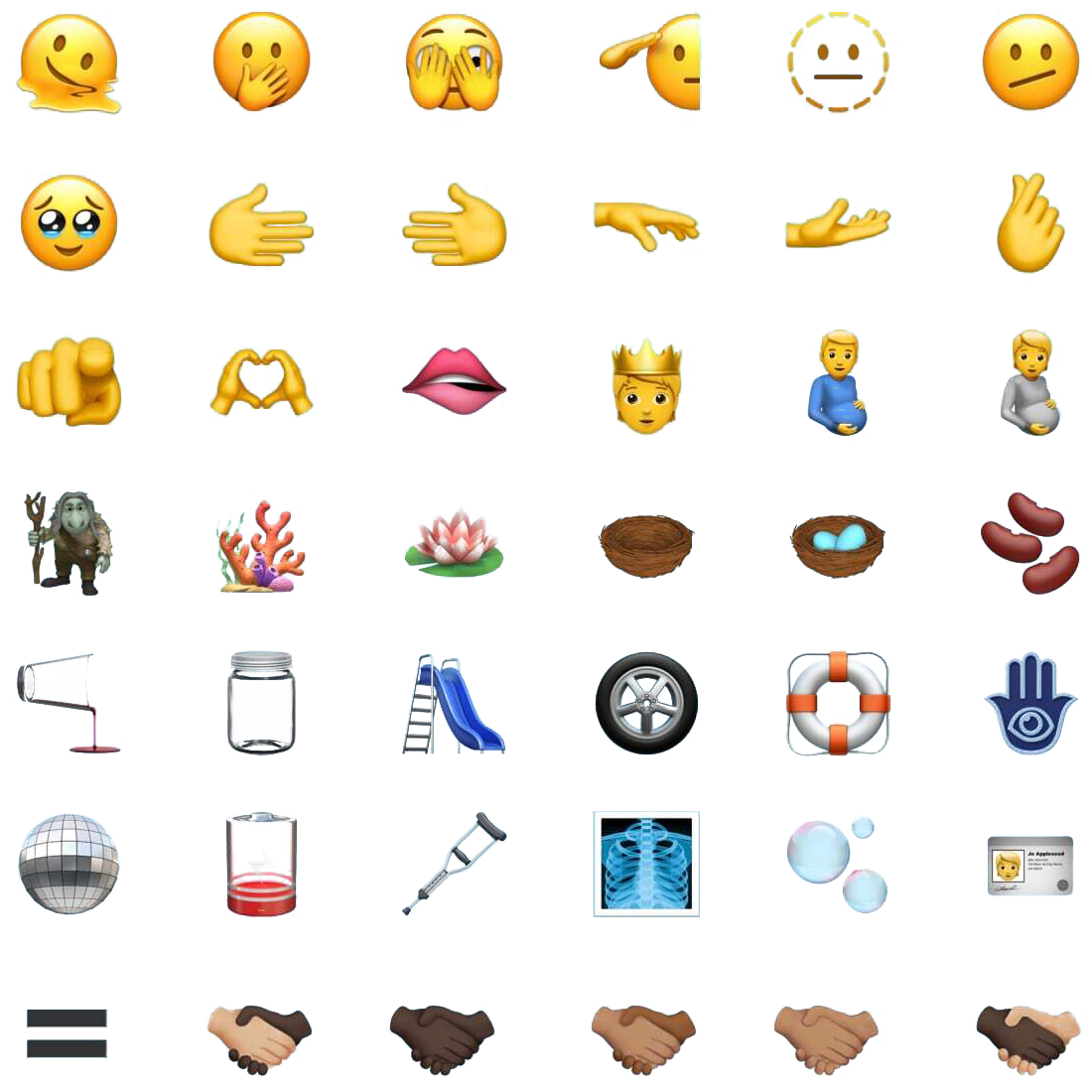Behind the curtains
What appears to be an international visual language, is in fact decided by a small group from the US tech industry.
Like all other digital alphabets, emoji are governed by the non-profit Unicode consortium, which is based in the US. Adding new emoji is voted on by members of the consortium. Its full members communicate in English, and the majority are employees of Adobe, Apple, Google, IBM, Microsoft, Oracle, and Yahoo.
Their privilege may be reflected in the lack of emoji for illness, poverty, hunger, and war. Keith Spencer points out in an article titled "The neoliberal politics of emoji," that emoji has plenty of options for food, objects, and products: "…they perfectly resemble the market economy that created them, and which has turned everything it can into a commodity. The market has come at last to commodify our feelings."
Language?
Humans communicate to one another using language, whether that is verbal, manual (signed), or written. The key objective of language is to transmit information from one person to another.
Prominent internet linguist Gretchen McCulloch put it nicely, saying: “language is a fluid ‘open-source project.’ It is an ever-evolving construct that works when a message sender successfully communicates information to the receiver."
With this in mind, you might be tempted to make the argument that Emojis are a new visual form of language. After all they can convey emotions and concepts in a visual form just like text, not to mention they are almost always used in conjunction with written language. But there are several reasons that exclude Emojis from gaining the status of being a language.
Mainly that Emojis, unlike other languages, do not follow grammatical rules. There is no standardized method of using Emojis. There are trends online, where Emojis such as the 🍆, 🍑, 🅱️, and others have obtained a wide accepted alternate meaning. But these examples fall far too short of the complexity and precision of traditional written languages. In certain small groups and communities there are “rules” to when these should be used, but they’re at best inside jokes of sorts. Not adding much of anything in ways of communicating new ideas.
While traditional languages have to some extent been standardized and rules have been created to dictate how to properly utilize them. In reality, and in practice the standardization must follow the language. When a new word is invented, as long as enough people begin using it, the semantics will follow and catalogue it as official.
Emojis works in stark contrast to this, in practically the opposite way. While ordinary people have the opportunity to make their own Emojis, it is tech giants that have the final say in dictating what does and doesn’t get accepted.
What is it then?
As a visual communications method that is so simplified in comparison to traditional forms of language, Emojis can only really serve as additions to text. Alone they are next to incomprehensible.
Before Emojis, it was hard to communicate sarcasm or irony through plain text. There was the exclamation mark to allude to excitement and various other kinds of punctuation to add nuance to written text, but it wasn’t as clear as most would want.
In real face to face communications spoken language is far more than just verbal. People gesticulate with their hands, incorporate their body with exaggerated movements, and articulate what they are saying with facial expressions. These all add to their spoken word to deepen their meaning and better communicate their intended ideas.
As not a full-fledged language, but instead a colorful and expressive addition to written language which adds slight hints of intended meaning, Emojis are quite successful.



